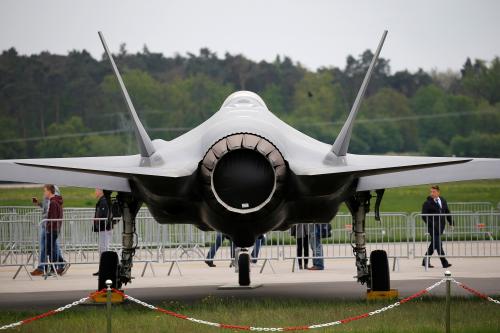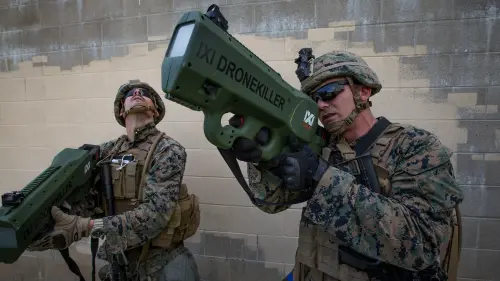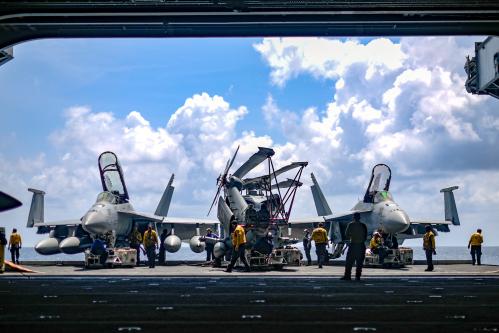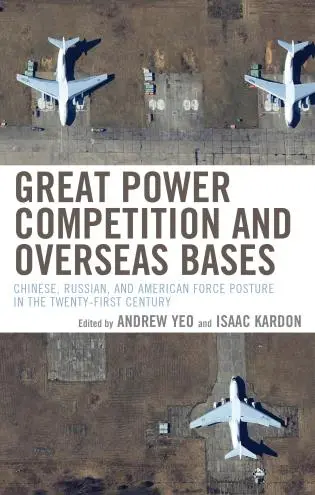After the Marine Corps takeover in Washington’s policy corridors a couple of years ago, it is now the Army’s turn. Long gone are retired generals John Kelly and Jim Mattis from their lofty perches in the Trump administration. And as of September 30, a third prominent Marine general, the George Marshall-like Joseph Dunford, has stepped down as the chairman of the Joint Chiefs of Staff, the nation’s top military job.
Now, Secretary of Defense Mark Esper and Chairman Mark Milley run the Department of Defense. As recently as this summer, they held comparable jobs within the Army, with primary responsibility for recruiting, training, and equipping that military service. With their promotions, their portfolios now extend to the entire defense community — with its three million employees, deployments around the world, and ongoing conflicts in roughly a half-dozen hot spots. Not only must they now raise armies and maintain navies, they must also provide the president their best advice on the use of force and management of national security crises.
Ensuring a high-quality and modernized force is much more important than enlarging the U.S. military at this juncture.
As they get their feet on the ground and look for lodestars to help manage these enormously demanding portfolios, Esper and Milley should remember one key insight from their recent Army experience: Ensuring a high-quality and modernized force is much more important than enlarging the U.S. military at this juncture.
Unfortunately, the Air Force and Navy have not yet accepted this basic message; each service aspires to grow its combat force structure by roughly 25% in the years ahead. This is a mistake. Even though the 2020 national defense budget will approach $750 billion, substantially above the Cold-War average in inflation-adjusted dollars, there will not be enough money to do everything. Moreover, President Trump himself projects flat defense budgets in the years ahead, and a number of the Democratic presidential hopefuls promise cuts. All the more reason that the Pentagon must prioritize.
According to official policy, the Navy wants to increase the size of its fleet from some 285 ships to 355. In fairness, that latter goal dates back to the latter Obama years, so it is not a Trump administration creation. The Air Force came out with a plan last fall to increase its own force structure from 312 operational squadrons to 386 (of all types of aircraft combined, and including the Air National Guard and Air Force Reserve). Even the Army wants to grow, it must be acknowledged — but in a much more measured and restrained way, to about 500,000 active-duty soldiers from the current 480,000.
There are good reasons for the services to want larger forces. Our soldiers, sailors, Marines, and airmen are often fatigued and stressed from extended deployments. And we have been asking a lot of their equipment as well. The solution, however, is not a larger force, but a more consistently funded and more modern one. For all its problems, readiness is strained but not broken, and many of the fundamentals of the force are sound.
Better management of existing forces by the military services would help a great deal, too. The Army is overworked partly because it maintains deployments of several thousand soldiers in South Korea and Poland through frequent rotations of multiple units, rather than the more efficient approach of permanently stationing individual brigades in these locations. The Air Force could consider similar changes in how it maintains key units in parts of the Middle East. Several fighter squadrons could, for example, be based in Gulf states rather than rotated in and out. The Navy still focuses too rigidly on maintaining permanent presence in the broader Persian Gulf and Western Pacific regions. More flexible and unpredictable deployments can ease strain on the force without giving adversaries any solace. The Navy can also consider crew swaps while ships remain at sea, rather than bringing crews and ships home from deployment together every six to eight months as is now the norm. With these kinds of adaptations, and improved readiness resulting from more consistent budgets, the size of today’s force can prove adequate to the tasks at hand.
By contrast, quality must improve, and modernization must intensify. That is not because the U.S. military is obsolescent. Rather, the pace of innovation in key areas of military technology, and the way in which vulnerabilities in our existing military could be exploited by Russia or China, require it. If we fail to make the U.S. military more modern, resilient, lethal, and survivable, the perception could grow that relative American combat power was fading — or that the American military had developed systemic vulnerabilities that an enemy could exploit to produce catastrophic failure. Deterrence could weaken. War could result. And we could quite possibly even lose such a war.
The years 2020-40 seem likely to see even more change in the technologies, and the character, of warfare than have recent decades. For the years 2000-20, revolutionary technological change occurred mainly in various aspects of computers and robotics. For the next two decades, those areas will remain fast-moving, and they will be joined by various breakthroughs in artificial intelligence (AI) including the use of big data. The battlefield implications in domains such as swarms of robotic systems usable as both sensors and weapons may truly come of age. In addition, progress in laser weapons, reusable rockets, hypersonic missiles, unmanned submarines, biological pathogens, and nanomaterials may occur rapidly. The sum total may or may not add up to a revolution. But the potential cannot be dismissed.
The rise of China and the return of Russia supercharge the competition and raise the strategic stakes. The marriage of rapid technological progress with hegemonic change could prove especially potent. The return of great-power competition during an era of rapid progress in science and technology could reward innovators and expose vulnerabilities, much more than has been the case in the 21st century to date.
Not every existing Department of Defense weapons program is equally defensible, of course. Some programs should be reassessed, or delayed, in order to make room for more survivable and effective systems — for example, reducing procurement of surface ships in favor of attack submarines and unmanned undersea vehicles for the Navy, and emphasizing longer-range aircraft more than fighters for the Air Force as well as the Navy. On balance, however, in broad strokes and in overall resource requirements, the Pentagon agenda for modernization makes sense. It is important to prioritize, and preserve, it.
Today’s already-excellent American military is big enough to meet the reasonable requirements of ongoing commitments and great power competition — provided, that is, that it improves further. It needs to repair readiness. Most of all, it must be modernized for greater lethality, and made more resilient and survivable against the kinds of precision-strike, cyber, anti-satellite, and other asymmetric attacks future adversaries would be sure to employ. We need to keep our eye focused clearly on the ball, and our resource allocations focused clearly on the strategy. We need a more modern and ready force, not a larger one.








Commentary
Why we need a more modern and ready military, not a larger one
October 4, 2019